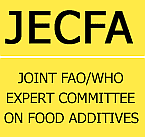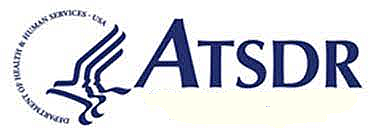 Other Databases with HBGVs
Other Databases with HBGVs
Other databases
The Open Food Tox database of EFSA is not the only database on the internet containing Health Based Guidance Values. Various other organisations such as the WHO and US-EPA and alike are involved in the development of HBGVs (sometimes also referred to as Reference Values), even for a longer period of time than EFSA. These organisations follow a procedure very similar to that of EFSA; using a selection of relevant scientific articles and papers to be evaluated by a panel of experts, to establish HBGVs like ADIs and ARfDs, but some also using a different term such as the Reference Dose (RfD).
Most of these organizations provide a database with documents, e.g. opinions or toxicological profiles, where the effects of chemicals are addressed. Some of these documents include also HBGVs, but there is not one database that includes all recent or previous derived values of these different organisations. One can search in most database using a name of a chemical or a code (e.g. its CAS Number); their output however differ as some provide a short overview of information whereas other databases provide a link to a full document or the document itself. This makes it hard to compare the output of the various databases with regard to the HBGVs for the same chemicals.
 WHO-JECFA
WHO-JECFA
An important series of evaluations leading to a HBGV come from the Joint FAO/WHO Expert Committee on Food Additives, better known as JECFA. This international organisation prepares scientific evaluations of chemicals on request of the Codex Alimentarius Commission. Consequently the JECFA opinions are considered leading for most Members of the Codex Alimentarius; the European Commission and most EU member states however prefer the evaluations of EFSA. Thanks to close collaboration of people in the scientific panels of JECFA and EFSA, deviating opinions between the two organisation are nowadays becoming rare, so most HBGVs of JECFA and EFSA can be expected to be identical.
The WHO publishes the evaluations in a searchable database, that contains the summaries of the evaluations of flavours, food additives, contaminants, toxicants and veterinary drugs. Each summary contains basic chemical information, ADIs and TDIs, links to the most recent reports and monographs as well as to the specification database, and a history of previous evaluations. The database is searchable by partial name or CAS number, by first character (letter or symbol), or by functional class. The database is however not presented in a downloadable form, so it is not (yet) possible to include the evaluations in the OOFT database.
 IRIS
IRIS
Another well known database with assessments of chemicals and groups of related chemicals is the IRIS database of the US-EPA. It can be searched online and is accompanied by an extensive website about the IRIS program and its activities. Special in this database is the possibility to search not only on the chemical name or CAS number, but also on affected organsystems and type of HBGV. Besides it offers various ways to look for cancer related effects (e.g. tumour type) and on Slope Factors. This makes the IRIS database very useful for the assessment of quantitative risks of carcinogenic compounds; its approach is far more informative than the MoE method of EFSA.
The IRIS database is downloadable in the Excel xlsx format. Its data were included in the OOFT database. As the data presented in this database slightly differs from the EFSA layout, the results of the IRIS database are here presented in a similar kind of format but with different fields.
 ATSDR
ATSDR
Another series of evaluations is published on the internet by the Agency for Toxic Substances and Disease Registry (ATSDR). This organisation is a health agency of the US Department of Health. Their Toxicological Profiles are a compilation of toxicological information on a hazardous substance. The database can be searched by Chemical Abstracts, CAS Number, Substance Name, Synonym, or Tradename. Each peer-reviewed Tox Profile reflects a comprehensive and extensive evaluation, summary, and interpretation of available toxicological and epidemiological information on a substance. As the focus here is more on human health and less on food, HBGVs are not presented; here they are called "Minimal Risk Levels (MRLs)" (no to be confused with Maximum Residue Limits for food commodities). A helpful topic in their datasheets is the description of health effects in exposed humans. Unfortunately this database is not presented in a downloadable form, so it is not (yet) possible to insert their MRLs and health effects to the OOFT database.

